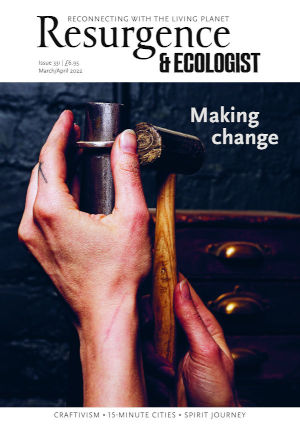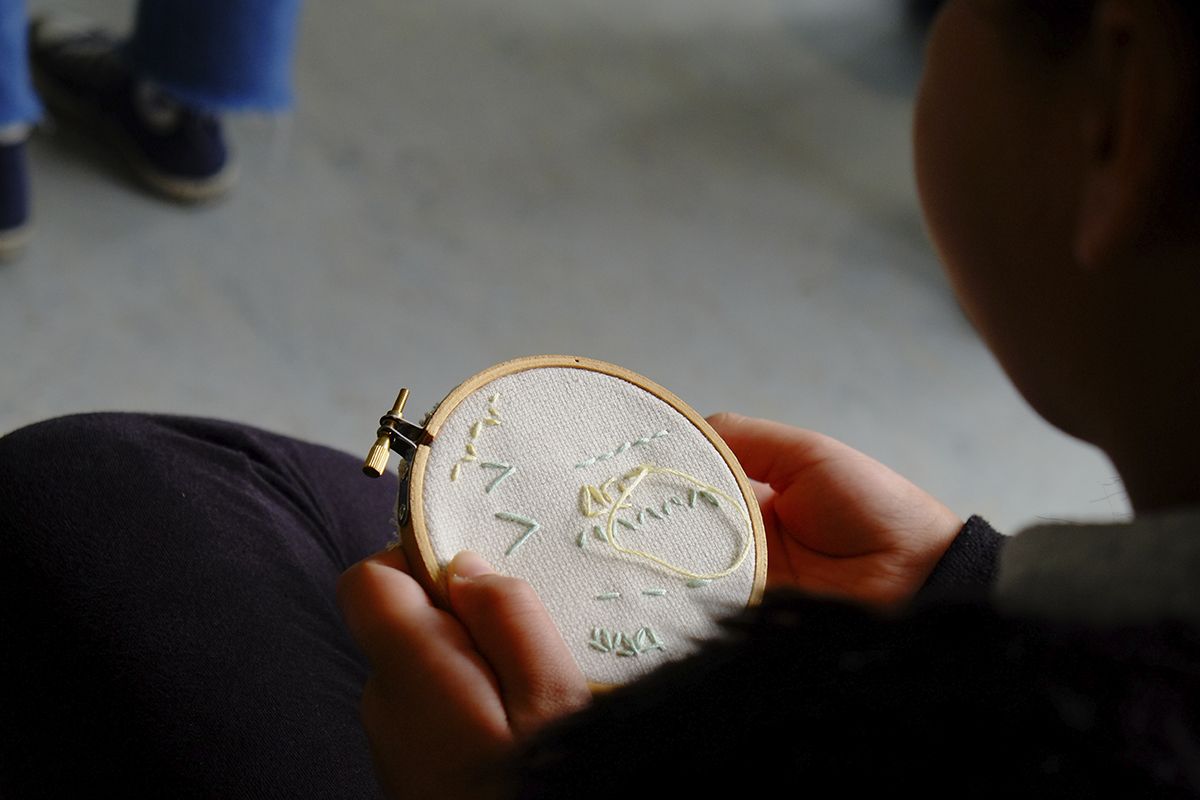The notion of craft as we understand it today emerged when the Industrial Revolution transformed the ways in which things were made, and the patterns of life that were entangled with them. Before this time, making by hand would have been taken for granted: the inevitable default for communities seeking to meet their needs via the resources, both human and material, at their immediate disposal. Thus craft as a category – defined by its distinction from other, more ruthlessly efficient forms of production – only emerged when its processes were consigned to the margins and could even appear to be at risk of slipping away altogether.
Likewise, in centuries past the practices that enabled physical resources to be held in common – such as shared rights to grazing, the collecting of firewood or fishing – would have been widespread, perhaps so familiar as to evade celebration. Such practices and resources would only become highlighted as commons when they were threatened by the ‘modernising’ forces of enclosure that sought to privatise and commodify them. Thus both craft and commons, in contemporary life, can be accompanied – whether loudly or quietly – by what cultural geographer Leila Dawney has described as a “spectre of dispossession”, a mournful sense of loss.
Yet this feeling does not give us the whole picture. Commons are indeed at risk of loss, because they are dependent on ongoing work. From another perspective, commons are always in a state of becoming – meaning that the potential for new commons is all around us. Similarly, although particular types of traditional craft knowledge are at risk of disappearing, we can see vibrant communities inventing and developing new ways of making that respond to the contemporary context. Makerspaces, online craft networks, and campaigns to repair rather than replace consumer goods enable peer-to-peer exchange, disrupt industrial production and resist the individualisation inherent in consumer culture. The ethos of openness in these initiatives demonstrates that the commons – a versatile concept of collectivity – remains relevant and full of radical potential.
Intersections between crafting and commoning are being creatively interrogated by the Crafting the Commons network, which brings together makers, curators and academics with varied expertise to make, talk and think together. The network has informed the development of We are Commoners, a major touring exhibition by Craftspace featuring UK and international artists. The projects exhibited represent ideas and resources to inspire acts of commoning. In the exhibition, skills and materials either provide a means to common – often in a shared or portable way – or are used to give insight into examples of commoning. Activating the verb ‘to common’ is a way to renew civic life. The exhibition argues that acts of commoning can be woven into every aspect of society and become a way of living in which we connect to produce shared rituals and resources that we look after together.
Projects range from work influenced by historical land-based commons, such as the Common Ground Peckham Rye Token project by Alice McLean and Justine Boussard and the stained-glass work ‘Rewilding at the Clootie Tree’ by Pinkie Maclure, to investigations of digital commons, such as Alinah Azadeh’s ‘Craft in Common’ resource, which explores themes of courage, care, loss, connection and repair. My own work in the exhibition, ‘A Temporary Outpost of the Fashion Commons’, is an interactive installation that explores fashion as a commons. International contributions include a project by Claudia Rodríguez, Ana Joaquina Ramírez and Rosina Santana Castellón that brought communities together to protest about the polluted Santiago river in Guadalajara, Mexico, and the work of Lise Bjørne Linnert and Gelawesh Waledkhani, who investigated ideas of mobile commons with undocumented migrants in Norway.
The exhibition is on at the Civic, Barnsley until 23 April and the National Centre for Craft & Design from 7 May until 10 July. To view a virtual tour www.craftspace.co.uk/wearecommoners
Join a talk about Nature as a ‘commons’ with Common Agency Projects artist Shane Waltener, including a making activity and Q&A on 13 April. www.resurgenceevents.org







